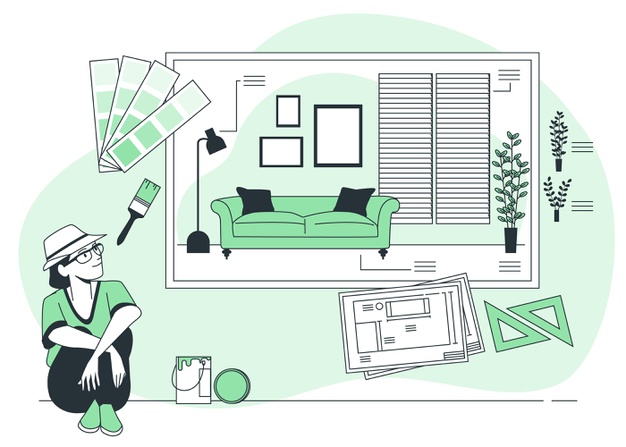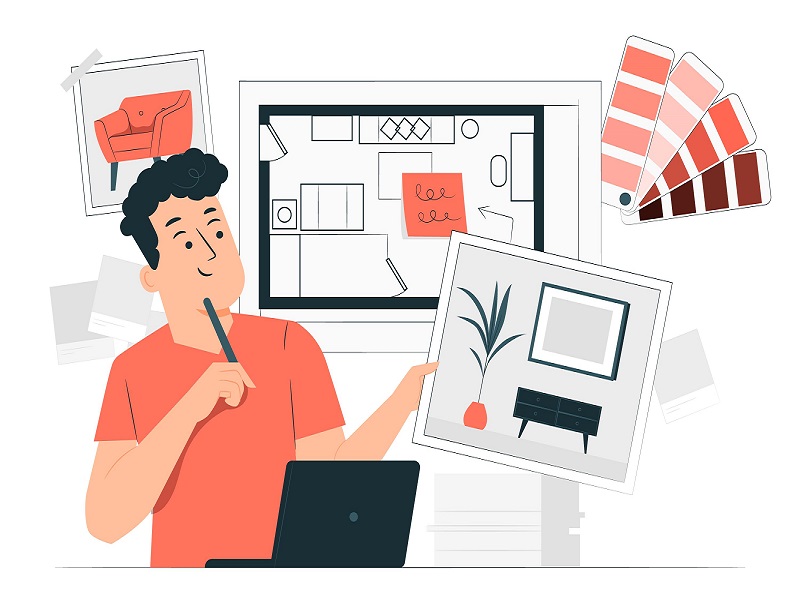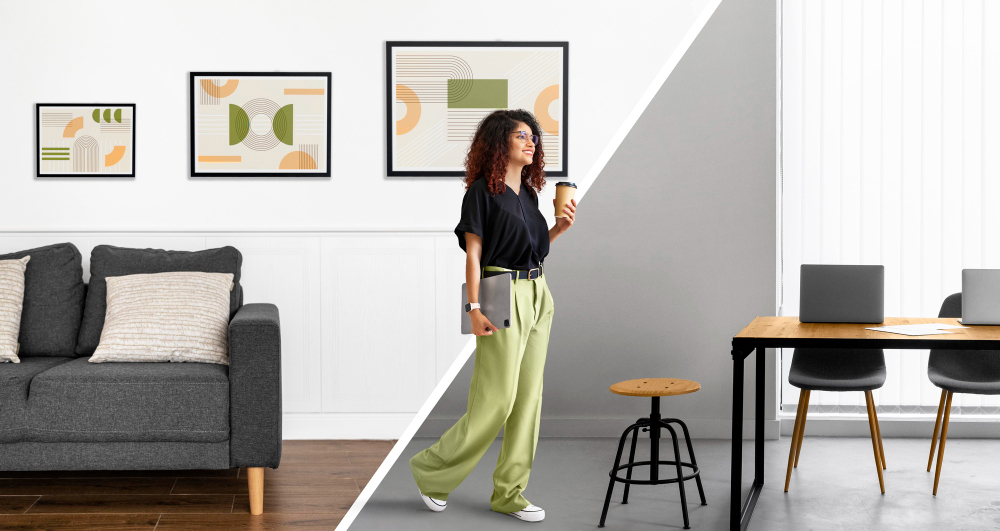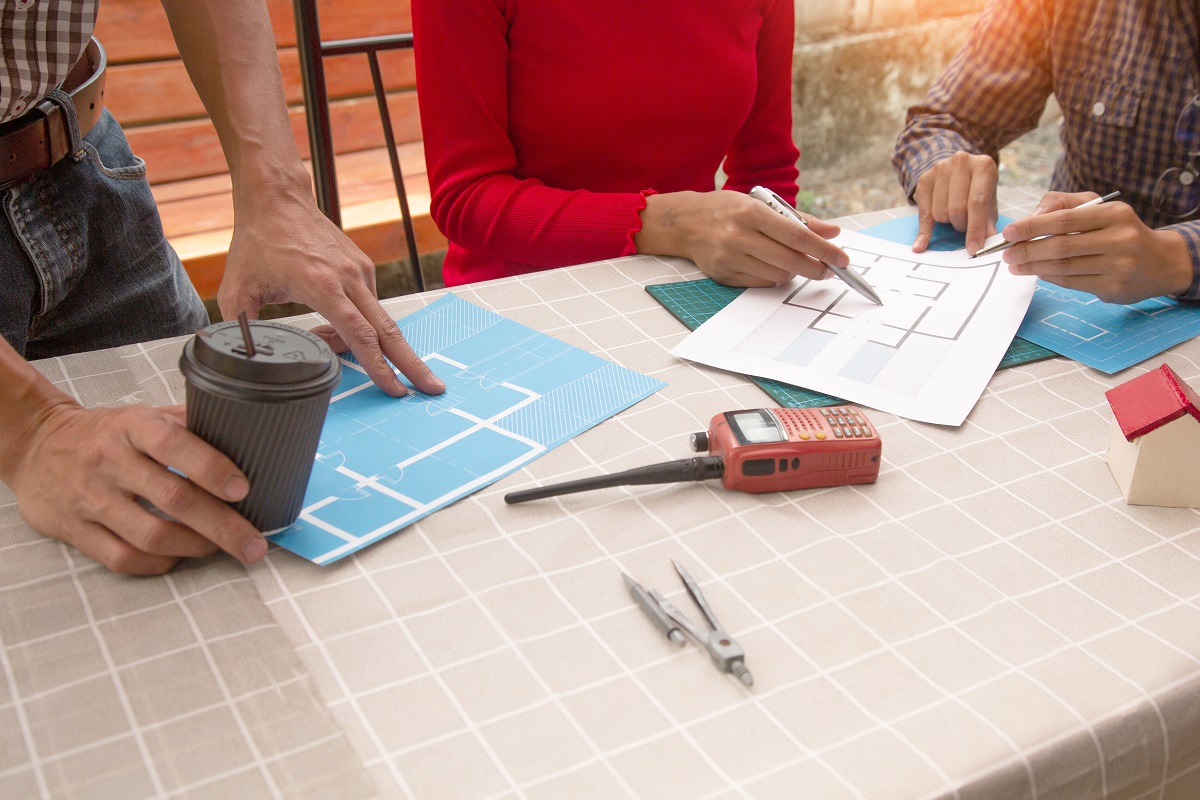15 Popular Types of Interior Design Styles Explained: Which One Suits You?
Your home interiors are an extension of your personality and self-expression. From traditional Indian living rooms to modern minimalist and contemporary apartments, the right colors, materials, furniture, arrangement, and decor can transform a house into a home.
So, if you are inspired by beautiful spaces and wish to learn interior design, there are several options, be it a Bachelor of Interior Design or even a diploma in Interior Design. Keep reading to explore some of the most popular interior design styles of 2025 and learn how to select the one that suits your taste.
15 Popular Interior Design Styles in 2025
- Traditional Interiors
Indian traditional interior design styles incorporate distinctly desi aesthetics and furniture to capture the owner’s personal taste.
It relies on intricate carvings, jali designs, wooden furniture, swings, and lots of natural fabrics (think cotton and linen) for curtains and cushion covers.
Do you want free career counseling?
Ignite Your Ambitions- Seize the Opportunity for a Free Career Counseling Session.
- 30+ Years in Education
- 250+ Faculties
- 30K+ Alumni Network
- 10th in World Ranking
- 1000+ Celebrity
- 120+ Countries Students Enrolled
Region-specific traditional designs rely on crafts, decor, and layouts unique and original to the state or region. This style is all about selecting colors, furniture, upholstery, and decor that reflect the many specifics of the cultures – their handicraft, palettes, prints, and more. Indeed, it is no wonder that many aspiring designers begin their journey with interior design courses rooted in such timeless inspirations.
- Biophilic Interior Design
Biophilic interiors emphasize all things natural. From big windows that allow lots of natural light to flood in, to indoor and air purifying plants that add a sense of living close to nature.
Read Also: 7 Creative Careers That Are Exploding Right Now
Book Now →
Biophilic spaces are known for-
- Sustainable materials like terracotta, bamboo, and wood and natural fabrics like cottons and linens.
- Live plants that add calm, color, and texture to the space.
- Organic patterns and neutral colors that are not jarring to the eye.
- Adequate ventilation and airflow.
- Adding Water elements, like an aquarium, to create a soothing effect and help avoid overstimulation.
- Modern Minimalist Interior Design
Modern Minimalism features a clean aesthetic defined by simplicity and order. It emphasizes basic shapes, lines, and a restrained neutral or monochromatic color scheme, creating a space that feels calm and uncluttered.
Read Also: Interior Design vs. Civil Engineering: Which Career is Right for You?
Do you want free career counseling?
Ignite Your Ambitions- Seize the Opportunity for a Free Career Counseling Session.Furniture is often minimal, with pieces that are both functional and uphold the minimal aesthetic.
Drawing inspiration from the Japanese concept of ‘zen’, minimalist spaces focus on stillness and calm. It is designed to curb overconsumption and emphasize eliminating any decoration beyond functionality.
Monochromatic textures, soft fabrics, concealed storage, and high-quality materials for a feeling of durability and luxury.
- Maximalist Interior Design
Younger generations, particularly Gen-Z, have a newfound love for maximalism. This style has emerged as a form of personal expression, embracing a “more is more” perspective that is in contrast to the minimalist “less is more” approach.
Maximalism focuses on opulence and extravagance, think –
- Bold colors and patterns with contrasting textures
- Lots of layering
- Vibrant and elaborate artworks
- Intricate furniture
- Jewel tones in accents
- A cohesive blend of different styles
Regal Maximalism, a niche within maximalist design, draws its inspiration from the opulence and splendor of the former royalties of India. It incorporates colors, structures, and aesthetics of old palaces into modern living spaces.
Rich colors like emerald green, royal blue, shades of yellows and pinks, Jalis, hand-painted walls, ornate handicrafts, chandeliers, Luxe fabrics, and intricately woven carpets and upholstery are some of the defining characteristics of regal maximalism.
- Shabby Chic
Having emerged in the 18th century, shabby chic has gradually evolved into a modern style with vintage aesthetics at its center.
Shabby chic has a soft feel, often reflected in gentle, understated color palettes and soft florals.
Focusing on the vintage appearance, it uses furniture that has a worn-out aesthetic for that “lived-in” feeling that makes the space look cozier and more homely. Think of the vacations you spent at your grandparents’ house and its old yet cozy aesthetics.
Shabby chic embraces the imperfections with delicate, layered textures, natural materials, rustic elements like an antique dresser table or a rugged wooden coffee table, combined with mismatched accessories for that grounded but chic appearance.
Read Also: From DIY to Degree: How to Learn Interior Design Professionally

- Contemporary
“Contemporary” points to the “here and now” of design trends and elements. It is a constantly evolving style that’s all about keeping up with the times.
In contemporary interior design, everything is adapted to the current technology and what’s in vogue at the moment. It is simple, sleek, and adaptable.
Big wall-to-wall French or Bay windows for natural light and a breezy feel, metal and glass accents to reflect light, soft furnishings, and layered cushions, pillows, and throw blankets are some of the key elements in a contemporary interior.
Incorporate textures by using lightly embroidered curtains, handcrafted decor, photo frames, and wooden panels on accent walls.
Add some plants and succulents to add a pop of green, natural element to complement the functional furniture and smart, adjustable fixtures.
- Modern Farmhouse
Modern Farmhouse is inspired by the characteristics of the traditional farmhouse style but with a simpler aesthetic and cleaner designs.
It focuses on a modern, functional space with oversized furniture, layered handcrafted textures, wooden beams, wrought iron accents, natural materials, and DIY home decor.
Modern farmhouse interiors emphasize a neutral color scheme, featuring shades of beige, grey, and white, often accompanied by warm wooden accents.
Throw in a few antique decor, refurbished furniture, and farmhouse-inspired smart lighting to wrap it up!
- Colonial
The colonial style of interior design is a legacy of the almost two centuries-long occupation of the Indian subcontinent, resulting in massive cultural exchanges, often reflected in the interiors of structures like Victoria Memorial and St. Paul’s Cathedral in Kolkata.
Colonial-inspired interiors are known for their pale or pearl-white walls, rich dark wood furniture with intricate carvings, classic four-poster beds, and ceiling fans with decorative blades.
Big windows with wooden louvered shutters allow the homeowners to adjust the amount of light and breeze entering the space, making it functional and adding to that colonial charm.
Use luxurious fabrics or organic cottons and linens, antique decor, and bolsters to complement the layered cushions and pillows!
- Transitional
The most popular interior design style worldwide, transitional spaces incorporate current trends while also using furniture and decor with a traditional essence.
Transitional is the perfect style for modern Indian homes, blending the desi elegance with a clean, minimalistic layout defined by fewer furniture pieces that prioritizes function and traditional textiles for curtains and cushion covers.
A calm and neutral color palette with whites, beige, and shades of brown and blue to add a relaxing feel, makes transitional interiors cozy, utilitarian, and appealing.
- Scandinavian
Characterized by uncluttered spaces, open layouts, uncomplicated designs, and minimal aesthetics, the Scandinavian style is rooted in ‘feeling close to nature’.
It uses natural materials, focusing especially on light colored wood for furniture, ceramics for decor, and cottons and linens for furnishings.
A neutral palette and occasional pastels with textured accent walls, layered curtains to filter out the light, and scented candles complete the Scandinavian interiors, building a soothing space that helps unwind in peace.
- Coastal
Imagine walking into a room that gives you a coastal feel after a long day at work.
Usually following a neutral palette of beige and white with shades of blue and turquoise to reflect the serenity and tranquility of the ocean, this style is ideal for instilling a sense of calm into your surroundings.
The big windows allowing lots of breeze and sunlight into the room need sheer, lightweight curtains and sheets for the perfect look, while natural materials for decor and furniture, and abstract artworks elevate the overall aesthetic.
The key is to create an essence of being by the sea without using shells and pearls around the room for decor. You can balance the neutrals and blues with a pop of green by adding some air-purifying plants.
- Eclectic
Do you have a bunch of favorite colors or lots of traditional craftworks that you like?
Eclectic interior design understands the fine line between chaos and cohesion. The first rule here is to know the rules and understand which ones you can break.
Use neutral bases and accent walls with bright colors, art, or wallpapers. Add pops of colors, and handicrafts from different regions, mix and match the curtains, cushions, and upholstery to create a colorful delight.
Add statement pieces, a wall dedicated to photographs with frames inspired by the opulence of the Indian royals, or a ginormous retro Bollywood-inspired artwork in the living room – it’s a mix of all things different yet connected inside one big composition.
- Bohemian
Bohemian interiors are characterised as “free-spirited”. It is highly personalized, making your living space an extension of your personality. These spaces are not bound by the usual rules followed in interior design, instead, you will see –
- Vibrant colors and mismatched furniture
- Layering
- Contrasting textures
What image do you form in your mind when you think of an Indian living room?
Bohemian interiors allow all the desi senses to come together to create a cozy space – souvenirs from family trips, childhood photographs, paintings you made with your siblings, refurbished furniture, and heirloom armchairs.
Blend crafts from different regions – think of a terracotta horse from Bengal atop a Kashmiri carpet, macrame decor with batik cushion covers – to add a more Indian touch to your Bohemian interior!
Read Also: Digital Interior Design: The Future of Styling & Courses

- Art Deco Style of Interior Design
Inspired by the 1920s-30s art style, art deco primarily focuses on bold, vibrant colors, geometric shapes, and chevrons, sunbursts, and zigzags.
Emphasizing symmetry, balance, and a lavish feel, it’s known for luxurious materials including marbled floors, soft velvet furnishings, gold and brass metallic accents, darker accent walls, huge mirrors, glass, and rich wooden panels.
Add an Indian touch to your art deco interior with traditional brass and bronze handicrafts and elaborate light fixtures!
- Minimal Glam
Minimal doesn’t have to look mundane. Minimal glam focuses on creating a sophisticated and uncluttered space with a luxe feel by using high-end finishes with clean designs.
A neutral color palette with only two to three complementary colors, understated tones, coupled with plush fabrics like velvet and faux fur, soft furnishings, lots of free space, and gold, silver, and brass metallic accents are some of the key features of this interior design style.
Read Also: Modern vs Contemporary Interior Design: What’s the Real Difference?
For that elevated glam look, use oversized mirrors, reflective surfaces, subtle yet distinct metallic knobs and handles, and a few carefully curated statement pieces that speak for themselves!
How to Select the Perfect Interior Design Style?
There are a gazillion different (and often appealing) interior designs that you can totally fall in love with; however, it is more than just the visual appeal.
Here are three quick tips that will help you pick the perfect style –
- Keep in Mind The Architecture of The Space – While small modern apartments might be suited for a contemporary, minimal, or Bohemian style, traditional homes with an open layout are ideal for coastal interiors or art deco.
- Know Your Personal Preferences – Do you like neutral colors and minimal aesthetics, or are you more into eclectic styles? Understanding your aesthetics will help you adapt the interiors to your taste.
- Explore Different Interior Design Styles – Make sure you explore different styles to avoid any mistakes and make the most out of the space.
Conclusion
Discovering your ideal interior design style is the first step towards creating a space where you feel you belong. It’s about making a home not just for yourself but for all the souvenirs, artworks, decor, and heirlooms that are close to your heart.
Check out the Interior design courses offered by AAFT, Noida, and kickstart your career.

AAFT has been providing the world with limitless creativity and expression since 1993! Through a dynamic and industry-driven curriculum, AAFT provides engaging and captivating articles to persuasive blogs and empowers its readers to explore diverse avenues of creative media education-related content.






